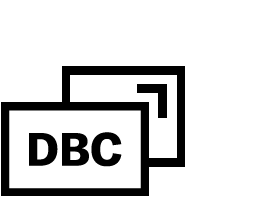BrainWorks: How to Make Your Brand Memorable
Founders Note: Amanda Snead holds a Master's degree in Neuroscience from Charité - Universitätsmedizin in Berlin and an Bachelor's in Neuroscience from Tulane. What we're trying to say is, Amanda is a Neuroscientist. And an amazing one at that. We're lucky to have her here on The Draft to guest post a few times. Read, comment, and enjoy!.
Think of your least favorite brand. Unless you have a personal vendetta against Starbucks for always spelling your name wrong or against Facebook for making it ever more confusing to get rid of unflattering, up-angled photos, you’ll probably have a hard time thinking of a brand you dislike. This is because bad branding goes unnoticed. The key to a good brand is that it’s memorable.
Target’s symbol; etched into your mind anytime you hit the archery range. Apple’s bitten fruit, Coca-Cola’s red and white sweeping lettering, Victoria’s Secret’s angels. These brands aren’t just succeeding at putting their proprietary images in front of our eyes more often, they’re winning space in our brains through their distinct look and strong emotional associations.
Oh, Kanye... You Branding Genius
There are two main components of utilizing how the brain works to create a memorable brand. First thing’s first, the customer has to see your brand – but you don’t want a passing glance, you want them to pay attention. Secondly, your audience has to have a strong memory of your brand. Consider waking up one morning and forgetting about Kanye’s branding, you’d take one look at your expensive moth eaten T-shirts and be on the phone with pest control within minutes.
Research into how the brain perceives, interprets, and pays attention to visual images is extensive. Studies of memory are similarly plentiful. Below are just some of the major aspects to consider, if you’re interested in the specifics, I’ll be writing about it more in depth for the DBC blog in the coming weeks.
How to Grab your audience’s visual attention and get remembered:
Be different
No I’m not stealing apple’s philosophy; there is a great reason to have an unusual design that isn’t easily recognizable as a known symbol. The brain is a meaning maker; it puts every visual stimulus into a category – known or unknown. If something is unknown the brain will spend more energy and time trying to investigate how to categorize this new object, which means there’s more likelihood it will be remembered.
Be clean
Some of the best brands like Apple and Target are great examples of this; they utilize open space very well. By clean I mean they make it very easy for the audience to see what’s important. Don’t clutter marketing materials with information unless you want most of the information to be forgotten. The brain is above all lazy and wants to conserve energy – so if you overcrowd the main message it’s more likely to be missed.
Add movement
Our ancestors’ lives and food depended on movement detection; it was a life-saving sense. The same is true today, but today’s wild bore is more likely an uptown bus heading your way because you’re crouching in the street trying to catch a rare Pokémon. In any case, we have brain cells that recognize movement specifically. It would behoove you to utilize the fact that movement is very important to gaining visual attention.
Use emotion
If your brand is edgy, you want to play to excitement and nonconformity (think Apple’s iconic 80’s Super bowl ad), if your brand is as sentimental as a bag full of puppies; stick with puppies there isn’t anything cuter. Memories are created in the short term if information is necessary to remember (for example, if there is a 90% off, one-time-only sale on a case of your favorite Rosé, you’d commit the appropriate details to memory until you’ve made the purchase).
But what causes people to remember your specific brand months later? Associating it with existing emotionally charged memories is the best bet, because emotional memories are the most powerful.
What does all this mean in terms of design?
That you should think holistically about how your brand evokes emotions and how your strategy plays to the brains’ natural processing abilities. For example, Apple’s early iPod commercials featuring upbeat music and an energetically dancing human-iPod silhouette were a huge success. The song played to our emotions, the dancing was a great use of movement, and use of a silhouette avoided unnecessary details so that the brain was not overburdened - just the happy human and it’s cause, the iPod.
I hope you enjoyed this general introduction to how you can use knowledge of neuroscience in your branding; my next posts will cover visual processing, visual attention, basics of memory formation, visual cueing in memory formation, and the neuroscience of creativity. Please comment if you have any neuroscience questions you’d like me to answer or any concepts you’d like me to write about.





